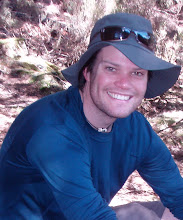 We get told all the time that Play is the most important occupation for
We get told all the time that Play is the most important occupation forchildren; play is how children learn, occupy their time, create and grow. There is loads of research out there about what play is and how children play. Reading all the information, I understood the complex theory, constructs and philosophy about play and embraced it with vengeance in my previous practice. I think because play has always (well hopefully at least mostly) been part of my practice, I did not really understand or comprehended the power of play or how simple play can be until this week.
Case Study 1
Bong; a 5 year old with CP, GMFCS 4; MACS 2 (I think he previously may have been GMFCS 3, but his muscles have tightened, reducing function). He attended therapy and the PT and I noted he had potential to stand and walk. He was instructed to ‘tindog’ (stand) and he tried, as hard as he could; he is one internally motivated person with the most amazingly beautiful personality. He would get to a crouched position with his knees in about 30 degree’s flexion. I then had a small ephinpy, what is Bong’s motivator to stand? Why should he stand? We are just telling him too.
 So I grabbed a simple toy for him to reach for; a target. I wish I had before and after photo footage! All of a sudden he was able to stand at full length and sustained it for 3 times longer, especially when his twin brother was holding the toys and teasing him with it a little; turning a mundane reach activity into a simple game. Magic! My mantra to myself and the colleagues became, “what is the child’s motivator to do this activity?” ‘Motivator’ was a common term with mutual understanding of the definition, some colleagues are already rolling their eyes at me, because I am saying it all the time!
So I grabbed a simple toy for him to reach for; a target. I wish I had before and after photo footage! All of a sudden he was able to stand at full length and sustained it for 3 times longer, especially when his twin brother was holding the toys and teasing him with it a little; turning a mundane reach activity into a simple game. Magic! My mantra to myself and the colleagues became, “what is the child’s motivator to do this activity?” ‘Motivator’ was a common term with mutual understanding of the definition, some colleagues are already rolling their eyes at me, because I am saying it all the time!Case Study 2
Gwen is a 6 year old with a un-diagnosed condition, she presents with whole body low tone, limited head and trunk control, and very low endurance, or so we thought. She has great cognitive skills and the most beautiful smile. Again Gwen was instructed to try a bridge position to assist with building core body strength. I watched as Gwen rushed though the movement with limited to no control, and was not able to hold the position for longer then a second. Her face told an amazing story of effort, pain and discomfort; a little like some of those boys at the gym trying to break a record.
So I grabbed a doll and a car and turned her bridge into a real bridge, driving the car and walking the doll under the bridge. Gwen’s control became much greater and she was able to hold her bridge for 10 seconds! The most important thing I observed was her facial expression, there was a smile and laughter as well as a colleagues comment of “wasn’t that improvement amazing!”
Case Study 3
Carla, a preschool honors graduate, recently diagnosed with TB meningitis arrived with a deeply traumatic fear of hospitals/clinics and anyone touching her, especially her left side which was now weak and had lost a lot of movement. The first session was soul destroying for all involved; with a push to complete range of motion treatment sessions despite the distress, for fear of further loss of movement. The plan was to try a graded approach to orientate her to the clinic and people involved as a safe and comfortable place to come.
We had a new clinician come to our next session, and it was amazing. She approached Carla just like a sister, calm and friendly. We started the session with Clara and the therapist reading stories; the only activity that Carla enjoyed and found calming in the previously session. Again is was magic, watching the therapists natural play skills engage, relax and build confidence with Carla. The most amazing thing was watching the therapist engage Clara with no toys! The therapist turned all the activities into games by mirroring the movements Carla was doing, making fun and being silly. To see Carla go from being completely distressed in one session to laughing in the next was mind-blowing; full credit goes to the social worker for this change and her natural ability to play.

For me, these sessions have really awakened the play element and power of play in me. It has clarified that while research, questioning, and theorizing the complexities of play is essential; and I still strongly believe needs to be continued, explored and researched; play can be very simple, very powerful and not only in learning and development. Play in action does not have to be complex, it is so simple, and it does not have to have ‘things’ to make it effective. All Play needs is someone who is a little creative, fun and willing to get on the floor and be a little bit silly :) Bring it on!















